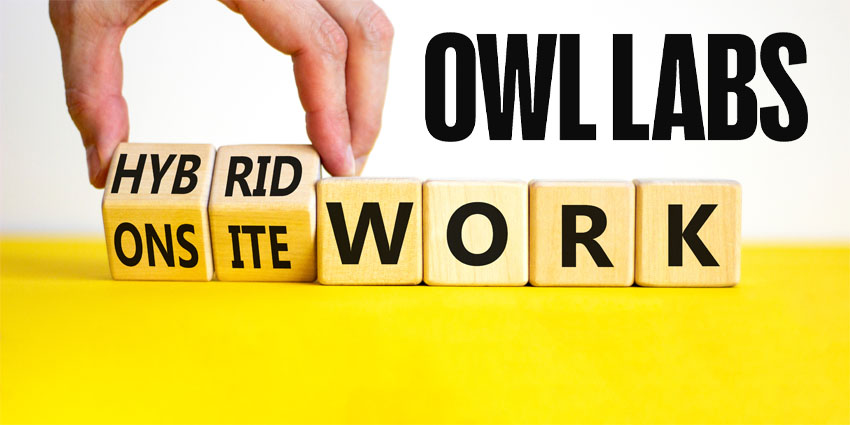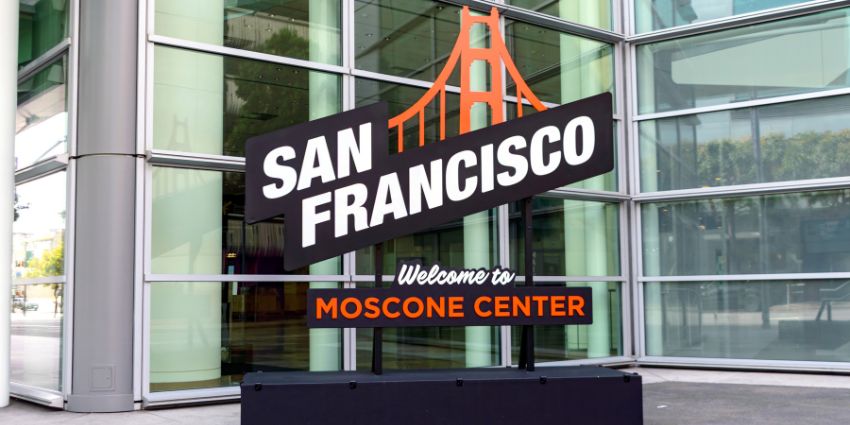What happens when an unstoppable force meets an immovable object? Because that’s where the flexible working and return-to-office debate looks to be heading.
Companies like Dell and Amazon have instituted full-time return-to-office (RTO) mandates, while a KPMG CEO survey last year found that almost two-thirds of leaders polled wanted to end hybrid working within three years. Many C-suites desire to return to pre-pandemic norms.
However, in the four years since the pandemic thrust flexible working into the spotlight, most knowledge workers have taken a liking to it. Blind, a forum of verified tech workers, polled 2,500 Amazon workers following the news of its full-time RTO mandate. Not only were 91 percent of respondents unhappy with the new policy, but almost three-fourths (73 percent) said they were considering moving jobs elsewhere.
That isn’t an isolated incident. Owl Labs’ recent State of Hybrid Work Report 2024 supports the importance of flexible working for the modern workforce. It found that almost half of workers would quit their roles if their organisation ended hybrid working and instituted a full-time in-office policy. Putting this genie back into the lamp seems improbable.
Will this gulf between workers’ and leaders’ priorities soon reach breaking point?
“Yeah, it will,” said Frank Weishaupt, Owl Labs’ CEO. “I think 2025 seems to be where it is coming to a head.”
“When we started this process after things started to get back to normal in 2021, there was this concept of, ‘Hey, come back to the office,’ and no one was really doing it on a regular basis. Then it was, ‘Hey, come back to the office two days per week, three days per week, X number of days per quarter.’ But 2025 seems to be the first time that many large bellwethers are putting their stake into the ground and saying, ‘You need to come back to the office, or you no longer have your job.'”
“The story is far from over,” Weishaupt continued. “Employees, without question, want flexibility. Almost half of UK workers would look for a new job that offered more flexibility. Seventy-four percent of UK workers still prefer hybrid work. Hybrid is the choice. A knowledge worker wants to be able to make the choice of where they’re most productive, and flexibility is something that they’re going to continue to want.”
Weishaupt highlighted that in a tight labour market where there are few options, some organisations will follow the example of the full-time RTO pioneers and go back to the office, with many workers having no choice but to bite their teeth and follow suit. However, he stresses the need to find common ground between employees and employers.
“From an employer perspective, I think they look around and say, ‘I have these facilities that I’m investing in, and they’re partially or fully empty, and that’s frustrating,'” Weishaupt said. “They want to make sure they’re getting maximum productivity out of their employees. They also want to create that organic connection that we were probably used to pre-pandemic, where you’re walking down the hall and having a casual conversation about something work-related.”
“They want those things to happen, but I don’t necessarily think they need to force people to sit in a cubicle from X time of day until Y time of day to make that happen,” he added. “That is why I think coffee badging (more on that later) actually came to light in the first place. It was like, ‘I see a certain value in certain tasks and certain things I can’t get necessarily access to in a remote location, so I’m going to go into the office.'”
The concerning part for Weishaupt is that we’re starting to reach the point where 46 percent of companies have implemented some sort of employee tracking, and 86 percent of those employees feel that that should be disclosed to them.
“Again, in a tight labour market, maybe it doesn’t make a difference because the employer has pulled all the chips,” Weishaupt explained. “But I think as things loosen up and you look at the factors that would drive you to leave a company, it’s, ‘Is this company headed in the right direction? Do I have a great boss? Do I have the right compensation? Also, do I have the flexibility to choose where I do my best?'”
“2025 will be a year where I think we get more conflict than we have in the past, but I think we need to figure out how to come to some happy medium here.”
The State of Hybrid Work Report: An Origin Story
UC Today caught up with Heishaupt to discuss Owl Labs’ aforementioned State of Hybrid Work Report, published towards the end of last month. Weishaupt started as Owl Labs CEO in October 2018, 18 months before the COVID-19 pandemic brought the hybrid work debate onto centre stage.
“Remote work was always this thing that was growing in popularity with the concept that you didn’t have to necessarily live in London to compete for jobs in London,” Weishaupt recalled. “That’s the direction it was going. Then, obviously, everything changed pretty significantly in 2020.”
The annual reports offer Owl Labs insight into “the mentality of the worker as we settle into the new world”.
“For me, there’s no real big surprise that hybrid work is still the preferred method for most employees because they want that flexibility,” Weishaupt continued. “Let’s face it, in today’s world, a knowledge worker really only needs good Wi-Fi and a laptop to be able to have an office, and they want the flexibility to be able to work where they want when they want.”
As a company whose technology facilitates hybrid work, monitoring the pandemic’s normalisation of the concept before observing its half-life effect in the years since saw Weishaupt and Owl Labs become an authoritative voice on the subject. They often were the first to identify compelling trends, such as managers adopting “stealth” flexible working stances in defiance of company policies and the stress of seasonal RTO mandates.
Owl Labs even coined a new phrase when it reported on the growing trend of “coffee badging” last year. Coffee badging, where employees spend a few hours in the office before heading home to continue their workday remotely, has gained popularity over the previous year and even prompted Amazon to begin tracking the length of time workers spend in the office—before it introduced its full-time RTO policy.
How did Weishaupt reflect on the phrase’s growing ubiquity and how the trend itself has evolved over the course of 2024?
“In 2023, we really wanted to investigate how employees were dealing with return-to-office mandates,” Weishaupt explained. “We found that the office still has a role, and this concept of coffee badging is the idea of employees going into the office, but not necessarily in the traditional eight-to-five time frame that has been the workday for decades.”
“On one extreme, you have employees who are trying to get around return-to-office mandates by just showing up and making sure that someone knows they’re present, to the point where they’re going to the office for periods of time for things that may make sense or might be the right reasons for them to go back into the office,” he elaborated.
Weishaupt highlighted that being in the office still has a role. Workers go in to leverage technology they might not have access to in their home office, as well as to collaborate with colleagues in-person or just for the social experience. That is the stable part of the worker mentality around coffee badging.
“The other interesting thing that came out of it is that many of them have been caught, and most of the time, companies really aren’t bothered by the concept of coming into the office when it works for you and certain tasks that make sense,” Weishaupt added. “70 percent of people who do coffee badging for our report have been caught, 84 percent of the companies really didn’t care, and 16 percent forced them back in full-time.”
A particularly interesting part of this story is that of the people polled that were coffee badging, 34 percent of them were individual contributors, but 47 percent of them were managers.
“This just shows the thirst for this at all levels,” Weishaupt asserted. “It’s not as though this is just an individual contributor concept that we’re talking about here. It’s up and down the organisation. This is something that really needs to get worked out between employers and all employees.”
Clock Blocking—The Latest Flexible Work Trend
If coffee badging was 2023’s major trend (and phrase), then this year’s is even more eye-catching: clock blocking. Clock blocking is the growing pattern of workers blocking slots on their calendars to ensure their workdays aren’t bloated with meetings and that they have substantial time allocated for productive work.
“I think when you’re blocking your calendar, you’re used to having a period of time where you were working flexibly from home,” Weishaupt said. “Now that people are back in the office, you’re probably getting your calendar blocked up with meetings all day. You got used to being in an environment where you could do heads-down work with maybe fewer people around or quieter, whatever the case might be for an individual.”
“We’re still trying to figure out how all this works,” Weishaupt continued. “We know that hybrid and flexible work is important to employees, but we also know that not only navigating those return-to-office policies is important, but understanding how to set boundaries in your work environment if you are hybrid so that your office doesn’t become a 24-hour, seven-day-a-week office environment, which I think is damaging. It creates burnout. It doesn’t create a happy and productive employee. It creates chaos.”
“I think those boundaries are starting to be created and are another one of those tent poles that need to be figured out for hybrid and flexible work to be successful.”
Successful Hybrid Work Requires Advanced Tech And Shrewd, Compassionate Strategy
Naturally, technology plays a critical role in any successful hybrid work strategy, a pain point Owl Labs is pitched to address. Eighty-three percent of UK workers say good technology is an important work factor, given the challenges around hybrid meetings, such as missing visual cues, having difficulty contributing to the conversation, and disengagement. Owl Labs reports that one-fifth of employees said their office upgraded its video conferencing technology in 2024 to address this.
“Technology plays a huge role in allowing this flexibility to happen,” Weishaupt said. “Without Microsoft Teams, Zoom, and Google 20 years ago, we never would have been able to dip our toe in the water and make video a part of our lives the way that it is every day. I think the same way about the conference room. For the remote participants to feel like they’re a part of the meeting, you need to have the correct technology in place. That’s what we do.”
“We’ve recently started getting platform certifications, which validate our technology and open more access to IT buyers. We’ve evolved the technology to 4K, and the software has evolved into multi-device.”
“While this has been a challenging time for companies to figure out their strategy, we’re starting to see that they’re getting closer and closer to trying to figure out that balance between in-office and work-from-anywhere. We think we’re a big gateway to making that happen and making it most effective.”
Does Weishaupt have any strategic or best practice recommendations around hybrid work and office culture?
“You need to figure out what works best for you,” he offered. “We’ve seen every form come our way, including companies that require people to be back in the office full-time. We see companies that have ultimate flexibility, and they have offices. If you happen to need it, you can go in and everywhere in between.”
“I can speak specifically for Owl Labs and how we look at it, which is we have a culture of accountability. As CEO, I firmly believe that I have hired great leaders to lead teams. I want them to trust and be transparent with their employees, to have an open dialogue with them about what makes the most sense for the employee to be most productive. That’s what’s important to me. I want the employee to have a satisfying experience here, and I want us to achieve maximum productivity.”
Weishaupt outlined that Owl Labs is in the rhythm of having several offices, with those offices open for anyone to use at any time. Then, on a quarterly basis, the company brings in different working teams to work together and build relationships.
“As I said earlier, the office has a role,” Weishaupt explained. “There are tasks. There’s access to technology. Collaboration can be done in an office. I think the best approach is to be flexible and then try to bring teams together to do that in-person collaboration when it’s appropriate. In the end, I didn’t hire people so that I could watch them work. I hired employees to collectively strive towards a mission, and I trust that we have the right systems in place to make that happen.”
What Is The Future Of Work?
Hybrid and flexible work is a topic that changes practically daily. It would be daunting to suggest predictions for the state of work in the next five to ten years, but do Weishaupt and Owl Labs have any thoughts on where all this is going in the long term?
“I certainly think hybrid and remote work, which are both on the rise for the state of hybrid work survey that we did this year, I think that becomes the norm,” Weishaupt said. “Flexible work for a knowledge worker to work where they want when they want is, I think, the long-term vision. It was the original vision of this company. Live where you want, work where you want.”
What about the rise of other work policies like the four-day workweek?
“I think the workweek will change over time,” he said. “Everybody’s different, and, again, it comes down to the individual and their maximum productivity. Of course, there will be overlapping periods of time when everyone needs to be available, such as all-hands meetings, staff meetings, and other interactions with customers.”
“But if you look over a five—or a 10-year time horizon, I don’t think that barriers of what day of the week it is and what time it is will matter,” Weishaupt added. “I think the knowledge worker will have the flexibility to be where they want. There was too much of a taste for it. Employees want things that hybrid work offers that a company can’t, which is time—that valuable time back from commuting—and also the money that it will cost you to be able to go and do that commute on a regular basis.”
“So, if we can figure out how to create that trust, transparency, and balance, I think you will have a very happy workforce and be back into this mindset that we were in pre-2020.”







